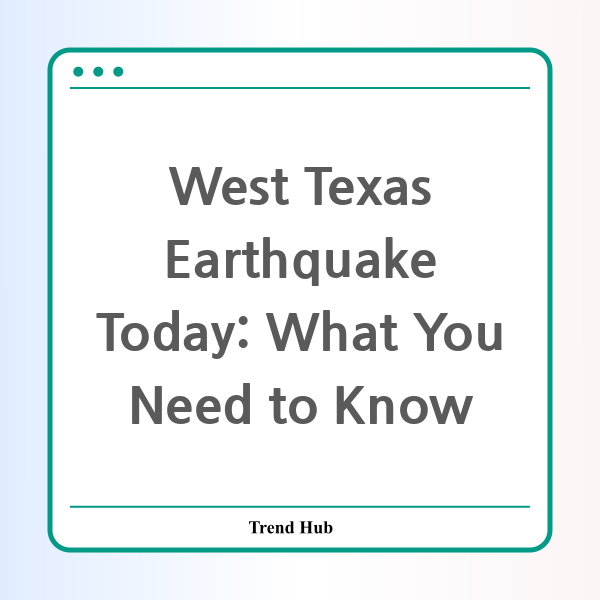* This website participates in the Amazon Affiliate Program and earns from qualifying purchases.

Did you feel the ground shake? A significant earthquake with a magnitude of 5.3 struck West Texas late Saturday evening, catching many residents off-guard. This natural phenomenon raised concerns and curiosity among those living in and around El Paso, as the tremor reverberated through the region.
The earthquake occurred on May 3, at approximately 7:47 p.m. Mountain Time, and was centered about 35 miles west of Whites City, New Mexico. For context, this location is roughly 149 miles from El Paso, making it a little distant yet close enough for El Pasoans to feel the aftershocks. The quake struck at a depth of 6.3 kilometers (about 3.9 miles) beneath the Earth's surface, according to reports from the U.S. Geological Survey (USGS).
Interestingly, this 5.3 magnitude quake was not an isolated event. It was part of a swarm of seismic activities recorded in the region since early April, which includes around 46 smaller earthquakes. While the initial tremor was the strongest, other earthquakes followed later that night, including a magnitude 3.4 and a 2.9, indicating the geological instability in the area.
Residents reported feeling the quake in several Texas cities, including Arlington, Midland, and Lubbock. Fortunately, due to the sparse population in the vicinity of the earthquake's epicenter, there were no immediate reports of injuries or significant damage.
One of the notable assessments made by the USGS indicated a 65% chance of experiencing a strong aftershock within the week following the initial quake. Such projections can serve as a warning for local inhabitants to remain vigilant. Seismologists suggest that while ground failure or landslides are unlikely, it's always prudent for residents in earthquake-prone areas to have a safety plan in place.
These events remind us of the unpredictable nature of the Earth’s crust, especially in regions like West Texas, which, despite being less frequently associated with significant seismic activity, can still be shaken by powerful quakes. With recent advancements in technology and data collection, the response to such occurrences has become more immediate and precise, allowing citizens to receive timely information.
If you felt the shaking, consider reporting your experience to the USGS through their "Did You Feel It?" service. Such contributions help create a better understanding of earthquake impacts across different areas.
As we monitor this developing situation, it's essential to stay informed and prepared. Check back for updates as new information arises regarding aftershocks and local safety guidelines.
* This website participates in the Amazon Affiliate Program and earns from qualifying purchases.